I’ve been intrigued enough by making monotypes on both the homemade gelatin plate and the commercial Gelli plate to explore in a more systematic fashion. So far, I’ve tried four different media, Speedball water-based printing ink, thickened dye, Golden Fluid Acrylics, Akua soy-based ink, and Dy-Na-Flow paint. Each gives different effects, each has its benefits and weaknesses.
My first experiments were with the Speedball water-based inks. I got some great effects on the Gelli plate. The ink rolled out beautifully and I got wonderful detail. The downside to the water-based ink is that it isn’t permanent. I tried to use some washes over the top, and even after drying and applying a spray matte fixative, the ink ran when I applied anything with water.
Thickened dyes gave me some good results, although the alginate thickener is problematic for monotypes. The nature of the alginate (like a big pot of mucus) makes the prints blobby and streaky. Interesting in its own way but not a smooth background. My blog post Printing with Gelatin details these trials.
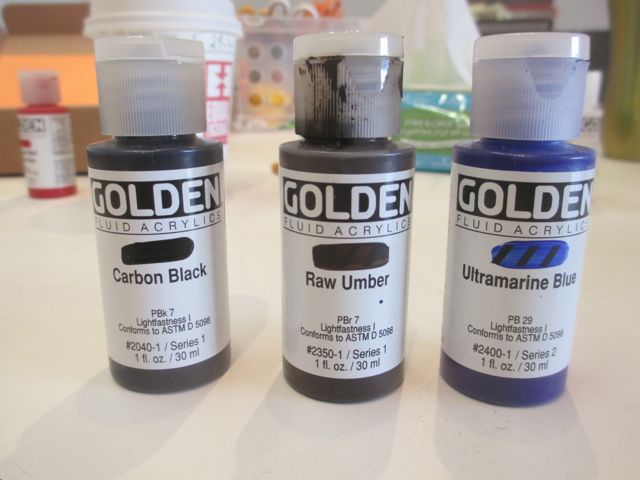 When I got back from New York I tried Golden Fluid Acrylics. These gave me just terrific results on the gelatin plate. It brayered out beautifully and gave me crisp details and interesting positive/negative effects. I haven’t tried them on the Gelli or the plexi yet. Those experiments are up next.
When I got back from New York I tried Golden Fluid Acrylics. These gave me just terrific results on the gelatin plate. It brayered out beautifully and gave me crisp details and interesting positive/negative effects. I haven’t tried them on the Gelli or the plexi yet. Those experiments are up next.
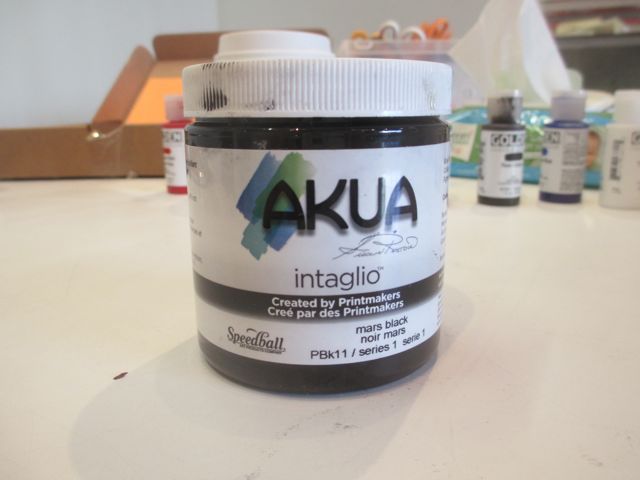 Next printing session was with Akua soy-based Intaglio Inks. I tried them on three different printing substrates: the gelatin plate, the Gelli plate, and a plain old sheet of plexiglass. Again, different results with each type of plate. On the gelatin the ink didn’t roll out smoothly. It gave a “pebbled” surface, which I kind of like since I’m all about visual texture, but didn’t afford the kind of detail I got with the paints. I got a better result on the Gelli plate, but again, not as crisp as with the paint on the gelatin. Interestingly, I got really great results on the Gelli plate when I pressed the inked up doily onto the plate and then printed the “postive” image rather than the negative. My third try was on the plexiglass and that didn’t work at all with the doily I was using to make marks.
Next printing session was with Akua soy-based Intaglio Inks. I tried them on three different printing substrates: the gelatin plate, the Gelli plate, and a plain old sheet of plexiglass. Again, different results with each type of plate. On the gelatin the ink didn’t roll out smoothly. It gave a “pebbled” surface, which I kind of like since I’m all about visual texture, but didn’t afford the kind of detail I got with the paints. I got a better result on the Gelli plate, but again, not as crisp as with the paint on the gelatin. Interestingly, I got really great results on the Gelli plate when I pressed the inked up doily onto the plate and then printed the “postive” image rather than the negative. My third try was on the plexiglass and that didn’t work at all with the doily I was using to make marks.
The one thing that worked better with the Akua on the plexi was a Trace Monotype (also known as a Draw Through). A trace monotype is when you ink up a plate, put a piece of paper (or fabric) on the surface and then draw on the back of the material to create a design. I’ve done this with inks and with thickened dye and love the effect, especially because you can then create a negative of your drawing by printing what’s left on the plate as a “ghost” print. This technique didn’t work at all with the gelatin or the Gelli, perhaps because I was afraid to really press in case I permanently damaged the flexible plates.
Last test was today with Dy-Na-Flow paints. The paints are specifically for fabric and have a very light hand. They are quite “watery” and formulated to work much like dyes. I’ve used them for batik when dye wasn’t appropriate. I figured that they might work much like the Golden Fluid Acrylics. Well, they did and they didn’t. I wasn’t able to roll the paint out with a brayer because it’s much thinner in body than the Golden. I applied it with a foam brush to the gelatin plate, the Gelli plate and the plexi and again, got different results with each. Surprisingly, it worked much better on the gelatin and the plexi than the Gelli. It completely separately on the Gelli, and though it made an interesting texture on its own, I wasn’t able to make any marks into the medium.
The best results were on the gelatin plate. The paint created an interesting “bubbly” texture which carried through to a second “ghost” print. The plexi results were okay, got some detail but the application wasn’t very thick so the color is light in value.
More testing to come with different media, different kinds of paper, and layering. I’ve already gone through over 300 pieces of paper. One of these days I’ll have to figure out what to do with them, but for now it’s just fun every day in the studio.
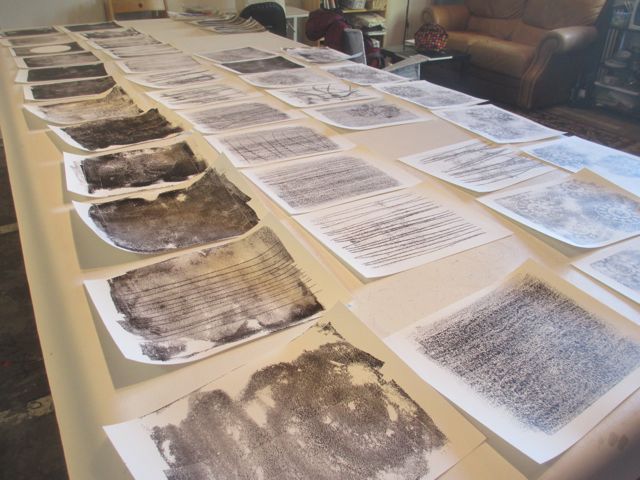
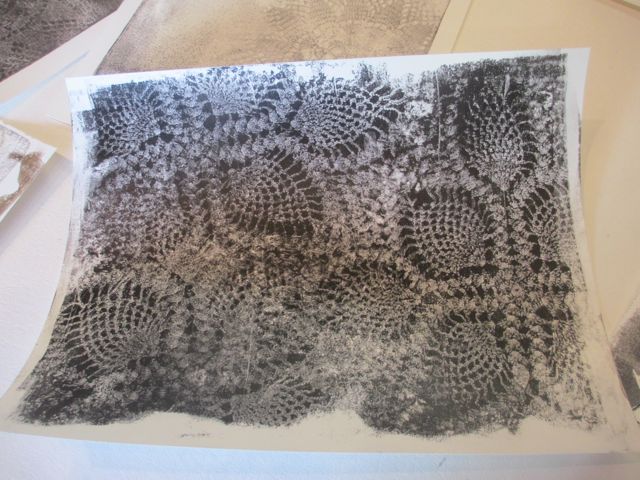
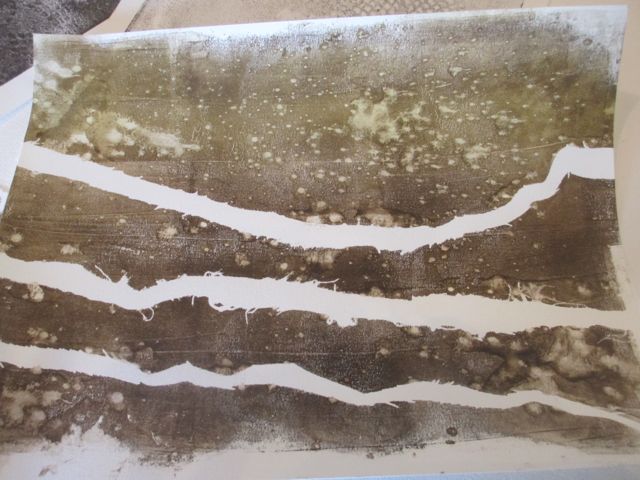
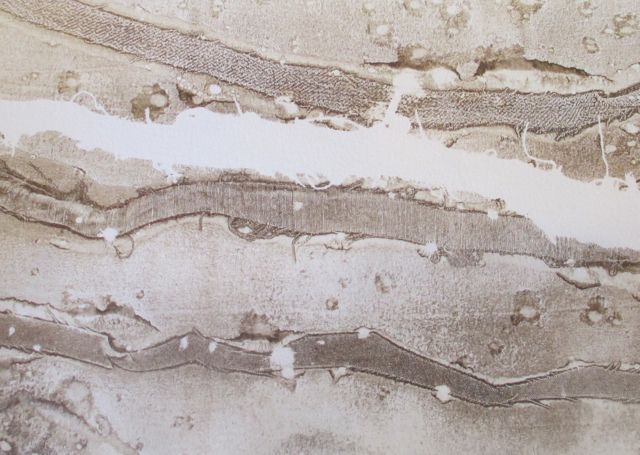
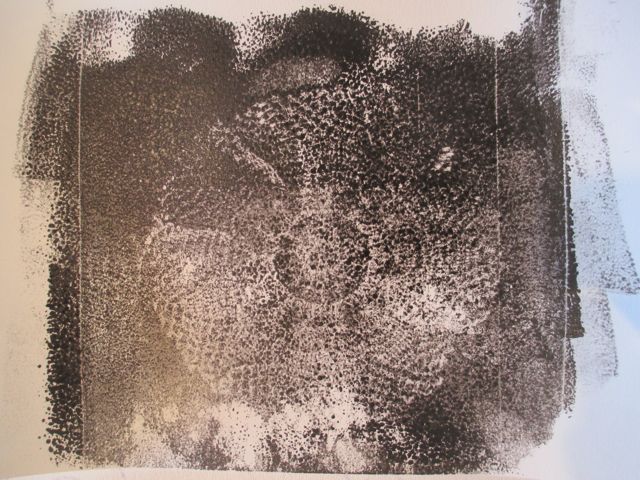

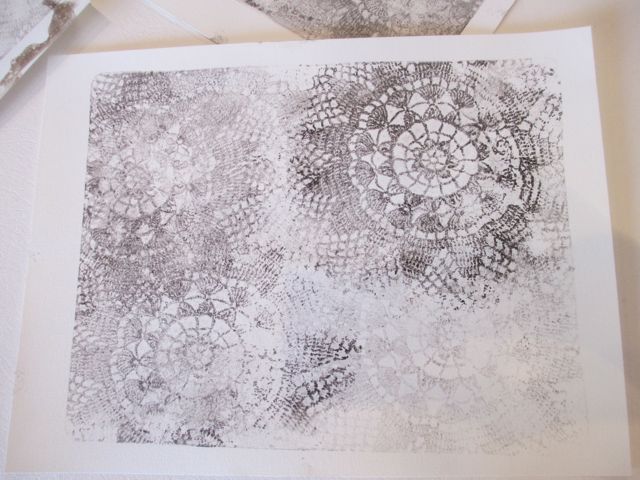
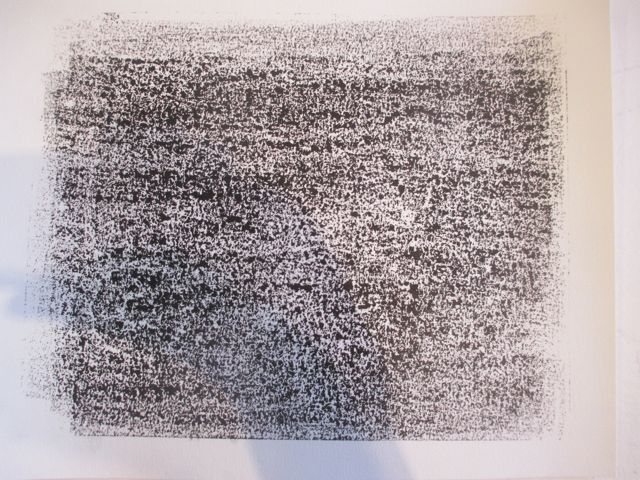
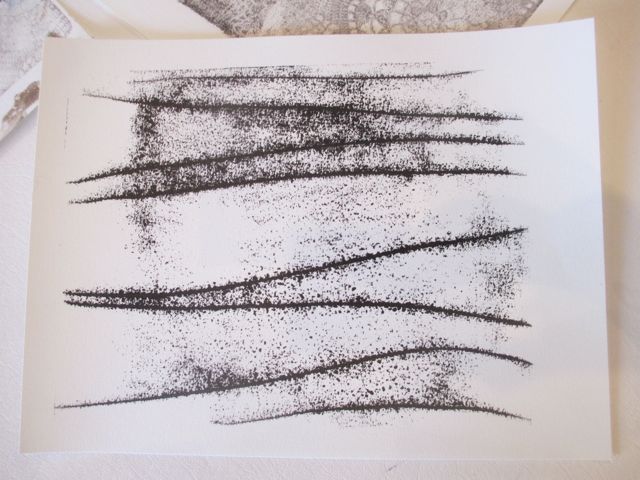
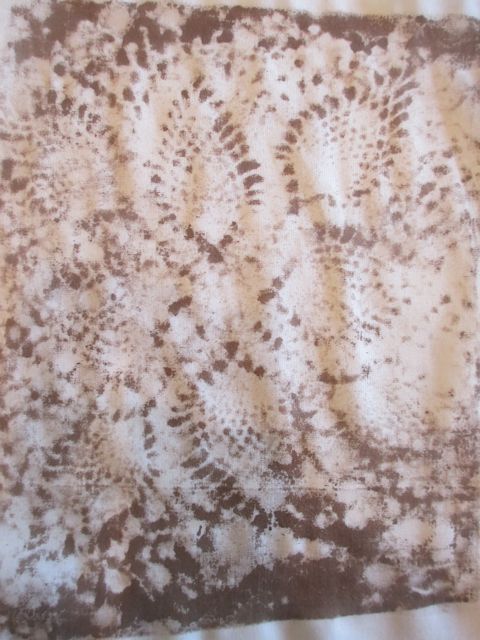



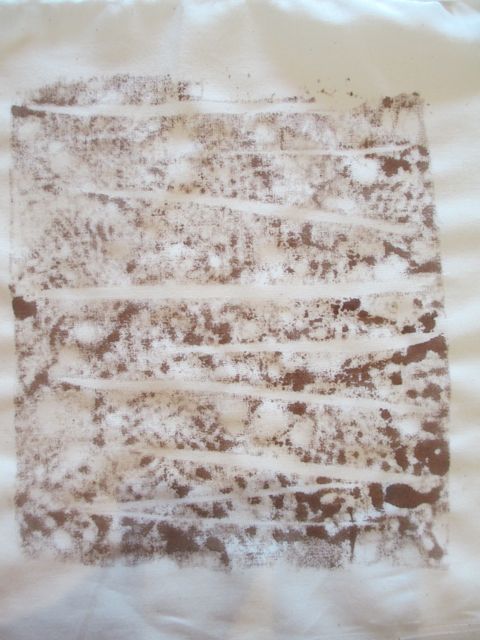

What fun you look to be having! Thanks for detailing the results of your experiments. I’ve been scanning my test prints, to use as digital layers later, and I’m always looking for more ideas to incorporate texture. Inspiring — thanks!